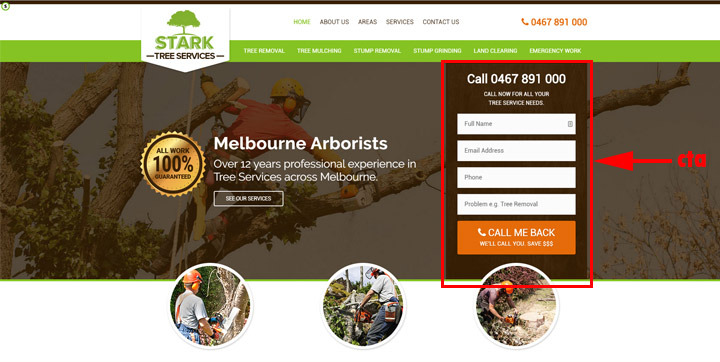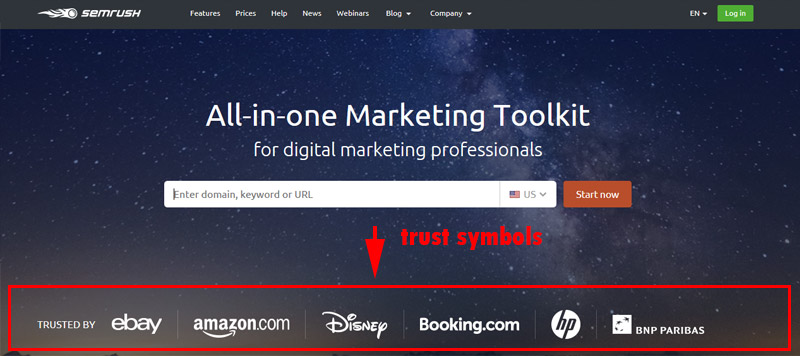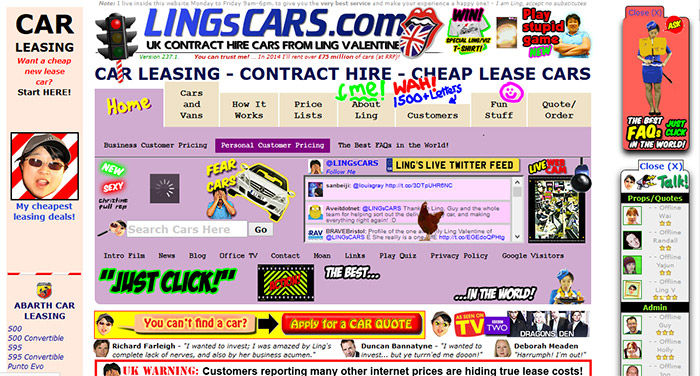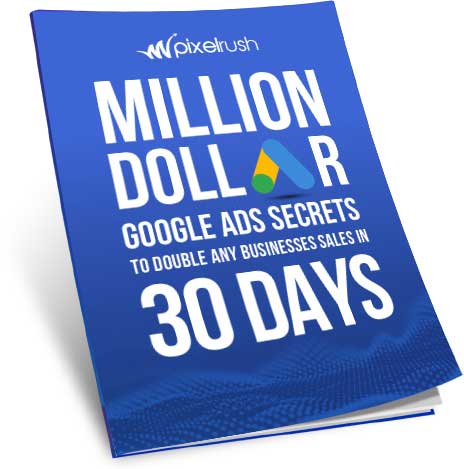Optimizing your website to generate leads should be a no-brainer, but business owners love to over-complicate things by including fancy features that negatively affect a sites ability to convert. If I could have a dollar for every time a client has requested a slider, I’d be a millionaire.
You see it’s not as simple as throwing a “click here” button on your home page and watching the leads pour in. (Unfortunately.) This might come as a shock to you too, your visitors won’t judge you on prettiness they’ll judge you on how trustworthy you seem and if they feel your business can add value to them.
1. You have no call to action on your website.
If you have a website, you need to have a call to action, or CTA — multiple CTAs, probably. There’s no such thing as a successful marketing campaign unless there is a successful CTA. A call-to-action is an image or line of text that prompts your visitors, leads, and customers to take your desired action. It is, quite literally, a “call” to take an “action.”
Conversions, revenue, business and profit — they all depend on the strength of your call to action. The CTA is so powerful and so important, it’s the foundation to the success of any online marketing initiative that without it your digital marketing campaigns will fail.

2. Your website isn’t built like a landing page
You don’t need to go out and buy expensive landing page software just to get more conversions. What you need to do is to design your website from the start to be based on the core elements that landing pages use.
Unbounce, one of the leaders in landing page software, highlights that there are 5 must-have core elements on any landing page.
- Your Unique Selling Proposition (USP)
- The main headline
- A supporting headline
- The hero shot
- The benefits of your offering
- A bullet point list summary of benefits
- Benefit and features in detail
- Trust indicators – reviews, testimonials, featured in, brands.
- Your Call-To-Action (CTA) – call us, sign up, buy now.
You might also want to consider:
- Useful & valuable information – detailed copy featuring a list of benefits, inclusions and costs.
- A clear and contrasting call-to-action. – save colour to make your CTAs pop.
- A lead capture form – put a form on every page and above the fold if possible.
- A highly visible phone number – seriously, make it egotistically big.
- Your address and contact details.
- Clear and easy to use navigation

3. Your information isn’t helpful
The aim of your copy is to communicate what value you offer your visitors and how it differentiates you from others in the marketplace.
- Who are you?
- What can you do for me?
- Why should I buy from you?
- What’s included in your products?
- Why will this product benefit me?
Remember, it’s not just your website they’re browsing, it’s all your competitors too, and if you can’t clearly communicate your USP quickly then your visitors will happily buy from your competitor instead.
Within five seconds your website, or any landing page on your site, should be able to inform your customers that they’re in the right place and that you offer what they’re looking for.
5. Your site isn’t trustworthy
Trust plays a huge role in the buying life-cycle but it’s often one of the most frequently ignored. If you want to increase sales, conversions and leads through your website then the first step is to build a trustworthy website.
Things that improve trust:
- Design – Does your website look good?
- Who & what – Is it clear who we are and what we do?
- Navigation – Can customers find what they’re looking for quickly?
- Benefits – What does it do? How does it do it? Why is it better?
- Experience – Is the business more experienced? Do they have qualifications.
- Secure – Is the website safe to buy from?
- Policies – Can I return something or get my money back?
- Reviews – Are their legitimate reviews and testimonials?
- Preference – Do they provide me something that others don’t?
- Contact – Are they easy to contact? Do they provide direct contact details?
- Location – Are they in my local area? do they use a physical office location?
- Price – Are the priced accordingly? Do they provide more value for money?

6. You completely ignored SEO
93% of online experiences begin with a search engine and it’s well-known that leads generated through SEO have a much higher opt-in rate than other digital marketing channels. We’ve seen that first hand with our customers who receive between one and two leads for every ten visitors to their website.
Local SEO and on site optimisation can be an incredibly cost-effective form of online marketing for small business but for some reason it’s the one which is most often ignored. Targeting local terms, such as suburbs, with long form content (1000+ words) can often help your site reach the first page for search terms overnight.
While these terms often have lower traffic volume they still convert and are cost-effective to build. The aim is to see your website as an investment, rather than an expense, so that you can build a budget that allows you to target higher competition and higher volume keywords with an ongoing SEO campaign.
SEO should never be an afterthought, onsite SEO and local SEO is something that should be built into all new websites.
What’s even worse is when you write your copy for Search engines and forget about your customers entirely, writing garbage like the example below is a sure way of turning your customers away. Remember that search engines will never ever buy your products but customers will as long as you treat them with respect.

7. You talk about yourself rather than what you can offer
Have you ever visited a website where all they’ve done is talk about themselves? It’s a clear give away when you read the about page and their bio documents their entire history and everything they’ve achieved without talking about what they can do for you.
It’s all me, me, me and it simply doesn’t sell. To get more leads you have to understand that it’s less about you and more about them.
A website without an obvious value proposition is virtually useless. Don’t just list your products or services; tell prospective customers in their words about the benefits they will see when they use your products. Tell customers how other customers have benefited from your products or services.
8. Your website looks like it was designed in 2008.
Most websites were originally designed to be a presence, something you add to a business card, rather than seen as an important lead gen tool like they are today
Times change. Technologies change. There are major benefits in overhauling your website every 2-3 years, and updating it much more frequently.

9. You haven’t added or updated content since it was built
You probably built your website years ago, simply because your competitor did the same. You haven’t updated your website since it was launched, it wasn’t generating any conversions so why bother?
In the space of a year your business can change significantly and it’s important that your website changes with it. Keep it up to date with your latest information so that your visitors have everything the need to make a decision on whether to work with you or not.
10. Your site isn’t responsive and mobile friendly
If you’ve been living in a bubble for the last few years and don’t know what responsive web design it is the way in which your website responds when viewing it on different devices i.e. mobile, tablets, desktops.
Google notes that you are likely to lose 61 percent of visitors if your mobile website is difficult to navigate. Alternatively, if your users enjoy a positive experience with your site, they are 67 percent more likely to convert and tell their friends about it.
To most, having a mobile responsive website is common sense but there are still a large number of non responsive websites on the web today. Not only will you hurt your conversions you’ll potentially affect a range of other factors:
- You rankings due to Google’s preference for mobile responsive websites
- Your traffic from search and other websites
- Your sales due to poor user experience
- Your word of mouth

11. Your site takes too long to load
47% of consumers expect a web page to load in 2 seconds or less and 40% of people abandon a website that takes more than 3 seconds to load.
79% of web shoppers who have trouble with web site performance say they won’t return to the site to buy again and around 44% of them would tell a friend if they had a poor experience shopping online.
This means you’re not just losing conversions from visitors currently on your site, but that loss is magnified to their friends and colleagues as well. The end result – lots of potential sales go down the drain because of a few seconds in loading time.


